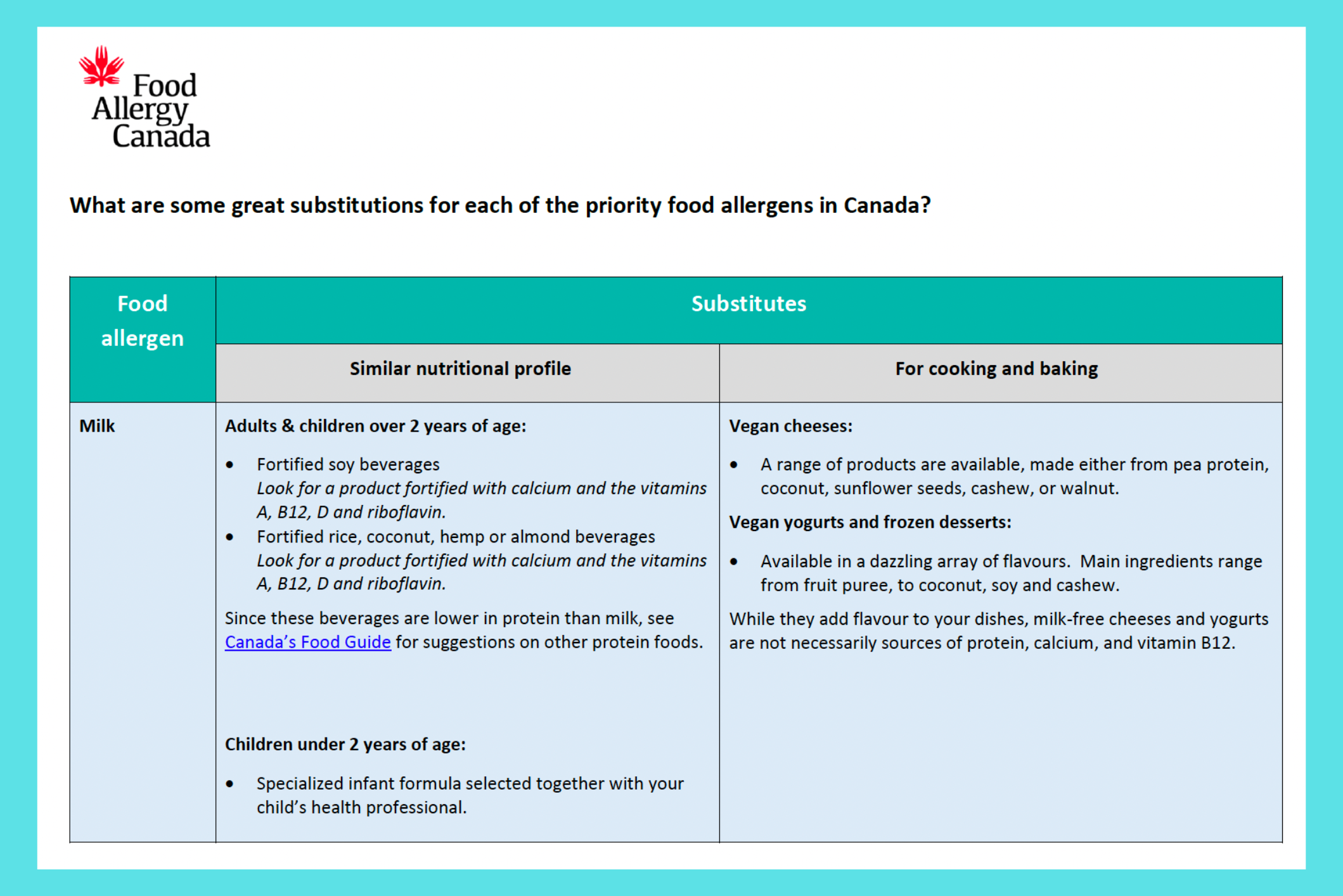
In this series, we ask dietitians across Canada to answer your questions on nutrition and dietary support. We recently spoke with Amy Chow, a registered dietitian based in Langley City, BC.
This month, Amy answers a question about managing picky eating with a food allergy.
What are some ideas for making mealtimes a positive experience, especially when picky eating behaviour is involved?

For many families, trying to figure out what to feed kids is already a big task to tackle every day. When picky eating and food allergy are coupled, meal planning can feel very overwhelming. Know that you are not alone! Here are 5 strategies that you can implement to help end mealtime battles.
1. Enjoy family meals
Create a routine with predictable meal and snack times – enjoy family meals together whenever possible. Remove pressure around food to make mealtime happier and reduce stress with eating. Eating together as a family is the best way to foster a positive environment and a great way to help kids eat better.
2. Start small!
Start with about 1 tbsp of each food item per year of age, or about ¼-½ of an adult serving size. Keep in mind that kids typically have a much smaller appetite than adults, so serving your child a full plate of food can be a turn off. Providing smaller portions can help expose kids to foods in a more manageable amount and may make it more inviting to eat.
3. Deconstruct meals

By “deconstructing” a meal and offering each component of a mixed dish separately, it allows your child to see exactly what they are eating. For example, if you are serving burgers for dinner – this can be offered as the burger bun, patty, cheese, tomato slices and lettuce separately. This can make a meal feel less overwhelming and allow kids to eat their safe foods or part of the meal. A bonus tip is to serve these meals in a divided plate or bento box, which physically separates the food items.
4. Offer finger foods
Offering finger foods that your kids can easily pick up with their hands or utensils can help foster independence and exploration. Kids can pick up, touch, and feel the food before putting it in their mouth. Learning about new foods is a step-by-step process – even if they are not eating it at the time, any positive interactions with the food is a great learning opportunity. It can take up to as many as 15-20 exposures to a new food before a child eats it.
5. Add flavour boosters
Flavour boosters can help add flavour to a meal and make it more appealing to children. Offer your kids’ favourite flavour boosters such as dips, condiments, and toppings on the side, and use it to help your kids explore a new food. For example, if your child likes yogurt, you can offer some carrot sticks alongside the yogurt. Show your child that you can dip the carrot in the yogurt or use it as a utensil and scoop the yogurt up with the carrot stick.
Some kid-friendly flavor boosters include:
- Dips: hummus, coconut yogurt, guacamole, pasta sauce
- Condiments: ketchup, honey, jam, sunflower seed butter
- Toppings: hemp hearts, shredded coconut, frozen blueberries, chocolate sprinkles
Managing picky eating with a food allergy requires a bit of creativity and a lot of patience! This food allergen substitution chart is a helpful resource when exploring new foods and expanding your family’s diet.
What works best for your family might include any or all of these 5 strategies, so don’t be afraid to experiment and test them out!
Learn more
Do you have a food allergy-related question you’d like to ask a dietitian in the months to come? If so, send it along to us at info@foodallergycanada.ca. Please note: The dietitians featured in this series answer questions on general topics, please talk to your doctor if you have questions about your own health or the health of your child.
Tags: Amy Chow, ask the dietitian, meals, picky eating


